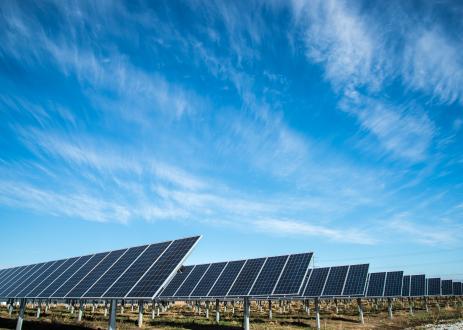威斯康星州如何满足其清洁能力计划目标

概要
该事实说明书探讨了威斯康星州如何使用其现有政策和基础设施来满足其在清洁能源计划下的排放标准,同时最大程度地降低合规成本,确保可靠性和利用经济机会。在WRI的情况表系列中阅读有关其他分析的信息,各州如何实现其清洁能力计划目标。
关键发现
威斯康星州可以通过采取以下步骤来获得CPP下减少的63%:
- 继续关注能源计划:通过该计划,该州已经采用了到2018年销售额约0.8%的年度电力储蓄目标。
- 在2015年以后维护现有的可再生投资组合标准:投资者拥有的公用事业公司出售的电力中有10%来自可再生能源。
- 增加现有天然气电厂的使用。以75%的身份运行现有的合并循环植物可以减少额外的排放。
- 提高燃煤电厂效率。在现有燃煤电厂采用低成本的运营改进和最佳实践。
威斯康星州可以通过将其效率目标提高到2025年的2.5%,到2030年的销售额的30%来弥补剩余的差距。这将几乎翻一番,这将是基于群众目标下所需的减少。
威斯康星州可以制定一项实施计划,该计划最大化国家的经济利益,并通过:
- 采用基于市场的碳定价计划,这鼓励了削减成本效益的排放并产生可用于公共投资或减少税收的收入。CPP鼓励各州在不正式加入交易计划的情况下进行交易信用。如果威斯康星州通过上述行动超过其CPP目标,则如果在2022年至2030年之间,如果排放津贴津贴以每短吨为10美元,则每年的收入超过1亿美元。
- 投资能源效率。效率可以帮助威斯康星州削减其排放,同时为房屋和企业节省资金。从2011 - 14年开始,每美元投资于对能源的关注返还3美元的福利,节省了房屋和企业的累计17亿美元。
即使在清洁能源计划中持续下去,威斯康星州也有充分的理由将其过渡到低碳电力部门。削弱其清洁能源政策(正如州立法机关最近通过减少对能源的资金的资金所做的那样,将降低该州居民的经济利益。但是,当EPA能够通过调节发电厂的碳污染前进时,采取步骤来利用更多清洁的能源机会可以扩大这些好处,并将威斯康星州置于比赛之外。
执行摘要
On August 3, 2015, EPA finalized standards for existing power plants that will help drive additional CO2 emission reductions by 2030. EPA developed these state-specific standards by taking into account each state’s existing fossil fleet along with an estimate of the potential to increase the existing coal fleet’s efficiency, ramping down coal generation by increasing the utilization of the existing natural gas combined cycle fleet, and developing more renewable energy resources. The Clean Power Plan enables states to use a wide range of options to meet their standards, such as existing clean energy policies and electricity infrastructure (the focus of this analysis), other tools to cut electricity use and increase the use of renewables, and broader initiatives such as participation in a cap-and-trade program or use of a carbon tax. While the U.S. Supreme Court has temporarily halted CPP implementation while the courts consider legal challenges, this stay is not a reason for Wisconsin to stop planning for a lower-carbon power sector.
